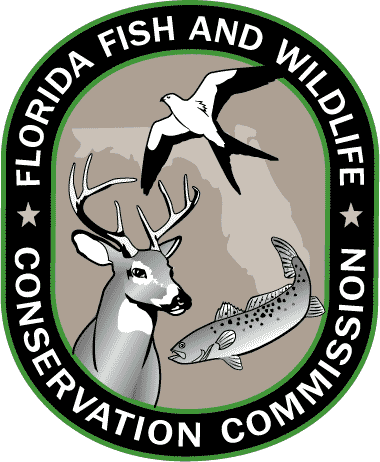First Hall of Fame Entry in Florida’s TrophyCatch Comes from Rodman Reservoir

Bob Williams of Alloway, N.J., was fishing on Rodman Reservoir with guide Sean Rush of Trophy Bass Expeditions around 8:30 a.m. Monday when the 23-degree chill must have seemed to leave the air. Hooking a 13-pound, 14-ounce largemouth on a big shiner, Williams knew he had the catch of a lifetime.
Rush knew exactly how to celebrate and memorialize the catch. He picked up the phone and contacted the Florida Fish and Wildlife Conservation Commission (FWC) to have the fish certified in Florida’s new TrophyCatch program, the result being that Williams gets more than $1,000 in rewards for documenting and then releasing his catch.
The FWC dispatched TrophyCatch coordinator KP Clements from St. Cloud, biologists Allen Martin and Dan Dorosheff from Lake City and public information coordinator Joy Hill from Ocala to converge at the ramp to document and celebrate the catch and release.
Launched in October, 2012, TrophyCatch is an angler-recognition/conservation program to reward anglers for being resource stewards by legally catching, documenting and releasing trophy largemouth bass. Since the program was rolled out, 31 Lunker Club bass weighing 8 to 9.9 pounds and 24 Trophy Club bass between 10 and 12.9 pounds have been verified and released. Those fish can be viewed at TrophyCatchFlorida.com, where just a photo of the entire fish showing its length and weight were required for verification. But Hall of Fame fish are different, and Williams is the first to successfully go through the process.
Once a 13-pound bass is caught, the FWC asks the angler to keep the fish alive in a well-aerated livewell and call 855-FL-TROPHY. The FWC then sends someone to document the fish, using certified scales, and to carefully measure the catch before releasing it.
This information is very valuable to biologists working to sustain Florida’s famed trophy bass fisheries. Knowing when and where these fish are caught and getting details on their condition can be used to determine which habitat-enhancement, stocking, regulations and other conservation measures are most successful. Moreover, by publicizing release of these fish the FWC helps generate enthusiasm for catch-and-release efforts, local business opportunities and excitement for a healthy, lifetime recreational activity.
That is precisely what happened with Williams’ bass. The 13.88-pound female was weighed on certified scales, measured as being 27 inches long and having a 20-inch girth, and was then released very close to where she was caught. A fin-clip of the fish will be genetically analyzed to determine if it is a full-blooded Florida largemouth bass and to see if it has any connection to hatchery-stocked fish.
“TrophyCatch will enable biologists to better manage freshwater fisheries by providing valuable incentives to anglers such as Bob Williams and recognition for guides like Sean Rush for reporting and releasing trophy bass,” said Tom Champeau, director of the FWC’s Division of Freshwater Fisheries Management.
Clements said that as a Hall of Fame angler, Williams will receive a free fiberglass replica of his bass produced by New Wave Taxidermy (a $500 value). In addition, he will receive a custom rod by ProLine with a US Reel baitcaster, a total of $150 in gift cards from Bass Pro Shops, Dick’s Sporting Goods and Rapala Lures, a duffle bag with a custom hoody and other fishing apparel from Bass King Clothing and a DVD of Glen Lau’s famous videos, including “Big Mouth.” He and his bass will also be memorialized at the Florida Bass Hall of Fame, which is at the Florida Bass Conservation Center in Sumter County, and celebrated at a banquet.
Williams has been fishing since he was a youngster and began teaching his own son to fish once he turned 3. Until now, his wife and son held the bragging rights, each having caught a 10-pounder before. However, Williams’ wife and fishing companion opted to stay back at Palm Coast for this trip because of the unusually cold and foggy weather. Now Williams not only has the biggest bass in the family but Florida’s first Hall of Fame bass.
TrophyCatch includes three tiers with progressively more valuable rewards. Bass 8 to 9.9 pounds (Lunker Club) or those 10 to 12.9 pounds (Trophy Club) that are caught, documented and released can be reported online at TrophyCatchFlorida.com any time of the year. To qualify for rewards and certificates, photos of the entire fish showing the weight and length are required. Bass heavier than 13 pounds that are caught between Oct. 1 and April 30 each year must be certified by FWC staff to verify the weight and take genetic samples.
Just registering on the website, which is presented by World Fishing Network, enrolls anglers in a drawing for a Phoenix bass boat powered by a 200 horsepower Mercury outboard. The biggest bass of the year earns a Super Bowl-like ring, from the American Outdoors Fund, for the angler who catches it. Experience Kissimee will award the lucky angler who has the biggest bass verified by TrophyCatch from Osceola County with $10,000. In addition, if the angler is on a guided fishing trip, the registered guide will receive $2,500 from the CVB.
“It is important for anglers to understand the rules and details about rewards, which may change during the year, since they are provided by various sponsors,” said Clements (see TrophyCatchFlorida.com).
The floodgates are open. Big bass are being reported at bait-and-tackle shops and marinas and by talented fishing guides all around Florida as we enter the peak of the season. Make sure you and your fishing buddies are ready to document and get rewarded for being able to say “My trophy swims in Florida” after you release your catch. “Like” us at FaceBook.com/TrophyCatchFlorida and check out the videos at YouTube.com/TrophyCatchFlorida to stay up to date on all the best fishing and current standings.

